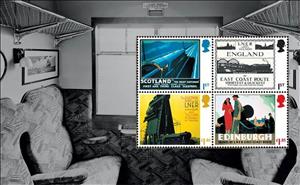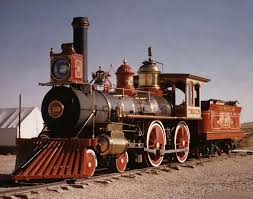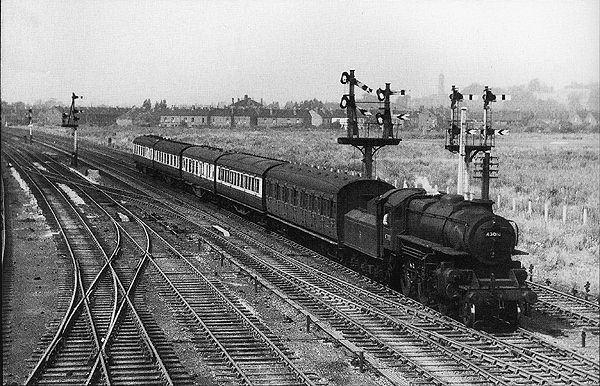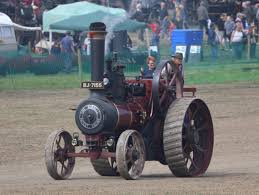Booklet Pane: Flying Scotsman Locomotive, Centenary Booklet Pane 3 (United Kingdom of Great Britain & Northern Ireland 2023)
Flying Scotsman Locomotive, Centenary Booklet Pane 3 (United Kingdom of Great Britain & Northern Ireland 2023)
09 March (United Kingdom of Great Britain & Northern Ireland ) within release Flying Scotsman Locomotive, Centenary (2023) goes into circulation Booklet Pane Flying Scotsman Locomotive, Centenary Booklet Pane 3 face value 5.60 British pound sterling
| Booklet Pane Flying Scotsman Locomotive, Centenary Booklet Pane 3 in catalogues | |
|---|---|
| Colnect codes: | Col: GB 2023.03.09-06c |
Booklet Pane is square format.
Pane from Prestige booklet. Face value of 1st £0.95 per stamp on day of issueAlso in the issue Flying Scotsman Locomotive, Centenary (2023):
- Stamp - Blyth face value 1st;
- Stamp - Cathedral Express face value 1.85;
- Stamp - Cathedrals Express face value 1st;
- Se-tenant - Cathedrals Express/Blyth face value 2*1st;
- Stamp - Christmas Dalesman face value 1st;
- Booklet Pane - Flying Scotsman Locomotive, Centenary Booklet Pane 1 face value 4*1st;
- Booklet Pane - Flying Scotsman Locomotive, Centenary Booklet Pane 2 face value 7.40;
- Booklet Pane - Flying Scotsman Locomotive, Centenary Booklet Pane 3 face value 5.60;
- Booklet Pane - Flying Scotsman Locomotive, Centenary Booklet Pane 4 face value 2.60;
- Booklet - Flying Scotsman Locomotive, Centenary Prestige Booklet face value 19.40;
- Se-tenant - Heap Bridge in Blizzard/Cathedral Express face value 2*1.85;
- Stamp - Heap Bridge in Blizzard/Cathedral Express face value 1.85;
- Stamp - Pickering Station face value 1st;
- Se-tenant - Pickering Station/Christmas Dalesman face value 2*1st;
- Souvenir Sheet - Promotional Posters Depicting the Flying Scotsman face value 5.60;
- Stamp - Promotional Posters from 1923 face value 1st;
- Stamp - Promotional Posters from 1932 face value 1st;
- Stamp - Promotional Posters from 1932 face value 1.85;
- Stamp - Promotional Posters from 1935 face value 1.85;
- Stamp - Shildon face value 1.85;
- Stamp - Victoria Station face value 1.85;
- Se-tenant - Victoria Station/Shildon face value 2*1.85;
Booklet Pane Flying Scotsman Locomotive, Centenary Booklet Pane 3 it reflects the thematic directions:
A locomotive is a rail transport vehicle that provides the motive power for a train. If a locomotive is capable of carrying a payload, it is usually rather referred to as a multiple unit, motor coach, railcar or power car; the use of these self-propelled vehicles is increasingly common for passenger trains, but rare for freight trains.
A poster is a large sheet that is placed either on a public space to promote something or on a wall as decoration. Typically, posters include both textual and graphic elements, although a poster may be either wholly graphical or wholly text. Posters are designed to be both eye-catching and informative. Posters may be used for many purposes. They are a frequent tool of advertisers (particularly of events, musicians, and films), propagandists, protestors, and other groups trying to communicate a message. Posters are also used for reproductions of artwork, particularly famous works, and are generally low-cost compared to the original artwork. The modern poster, as we know it, however, dates back to the 1840s and 1850s when the printing industry perfected colour lithography and made mass production possible
Railways - Transportation system made up of metal rails which is designed to allow trains to maneuver on the tracks from one location to the next.
A traction engine is a steam-powered tractor used to move heavy loads on roads, plough ground or to provide power at a chosen location. The name derives from the Latin tractus, meaning 'drawn', since the prime function of any traction engine is to draw a load behind it. They are sometimes called road locomotives to distinguish them from railway locomotives – that is, steam engines that run on rails.




